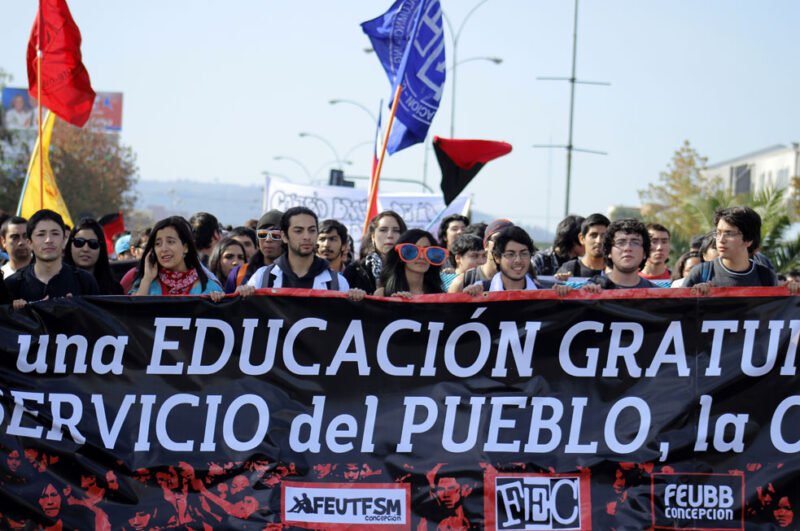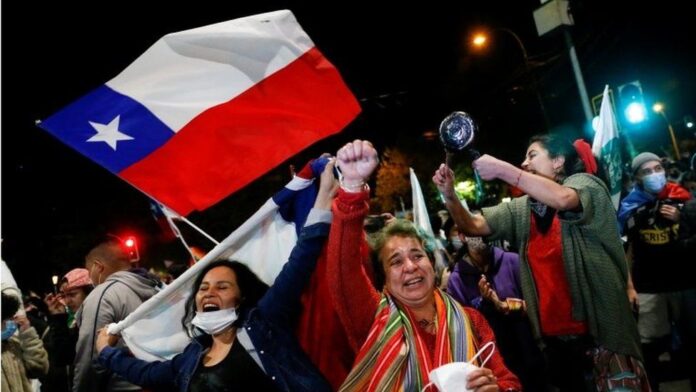In May 2021, with over 95% of the votes counted, the results of the Chilean constitutional Referendum are being decided. Resulting from mass protests in 2019, the Chilean government had agreed to a rejection of the Fascist Pinochet-era Constitution and agreed to write a new democratic constitution.
Politicians vs elected Assembly
Based on the current count, it seems that of the 155-member constituent assembly, nearly a third will come from the left and center-left parties. Just over a fifth will come from right and center right-wing parties. Surprisingly, a third of the Assembly will be independents. The remaining 17 seats are reserved for representatives of indigenous communities. Many resolutions require a two-thirds majority. The lackluster performance of the right of center parties means that they would not be able to effectively block resolutions by themselves. This weakens their negotiating powers. Many big corporates were hoping that they would have been able to lobby on their behalf.
Background
Pinochet’s rule
Pinochet’s rule started with a coup d’etat. He used the military to overthrow the world’s first democratically elected national Marxist government. The previous government promised a parliamentary path to socialism. This ruffled the feathers of the US, who became afraid of a red wave in Latin America. With Cuba becoming a socialist state, America was afraid that Chile would follow. They used all sorts of economic warfare to break the Chilean economy and seemed to have been involved in Pinochet’s subsequent coup.
Pinochet’s constitution
In the later years of Pinochet’s military rule of Chile, he came under pressure to step down and return Chile to democracy. This pressure was both from inside the country and internationally. Pinochet’s rule was followed by a rushed referendum which was fascist. The new constitution was drafted mostly by Pinochet’s followers. It protected business interests and was weak in the protection of human rights. It gave the military a lot of power and left representative and democratic institutions weak.

The constitution was ratified by a plebiscite, but there were complaints that the military had too much power in overseeing the elections. When the constitution was finally ratified, the coalition that came to power was based on parties that had opposed Pinochet’s constitution. The coalition was called the Concertación por el No, or Concertación (Campaign for the No, or Campaign). The Concertación was the most powerful coalition from the end of Pinochet’s government in 1989 to 2010 when they finally lost.
While in power, the Concertación was not able to alter the fundamental pro-corporate and promilitary nature of the constitution. This restricted the country’s ability to deal with real socio-economic issues, like poverty, inequality, healthcare, and education.
Protesting: From bus fares to the constitution
From 2006, student-led protests began to grow in Chile. Originally the protests were in response to the rising fares in public transportation, but as they grew, protesters began to focus more comprehensively on the provisions for education, from cost to access to transport to representation.
Chile’s education system was regulated through the Organic Constitutional Act of Teaching. The Chilean public education was broken down, and the state was a rubber stamp regulator of education rather than a provider.
Protesters started demanding that the state scraped the Organic Constitutional Act of Teaching, and replace it with real infrastructure. Protests grew over the years. Finally, the state agreed to give in to the demands of the protesters.
While the government passed many acts based on the protesters’ demands, all of those acts were struck down by the courts. Ending the for-profit education system in Chile became a question of Chile’s constitution.

In 2018, the Concertación lost the elections to the Right-wing parties led by the pro-business Sebastián Piñera. In 2019, the government increased bus fares again, leading to the ¡Evade! Movement, where students refused to pay the fare in public transport. This escalated quickly, and within one month of the beginning of the ¡Evade! Movement, the protests spread all over the country, leading to a state of national emergency.
In November 2019, the government agreed to rewrite the constitution by plebiscite. The Plebiscite originally was to begin in April 2020 but was postponed to October due to the COVID pandemic.
In the first phase, the people were given the option of retaining or rewriting the constitution, and whether the drafting body should be wholly elected. The overwhelming majority supported a rewrite by a newly elected body. In the recent phase, the people voted on the 155 member committee. When the committee drafts a new constitution, it will be put up against being accepted by a popular vote. This is expected to happen no later than August 2021.



